Visual Art Education Pedagogy
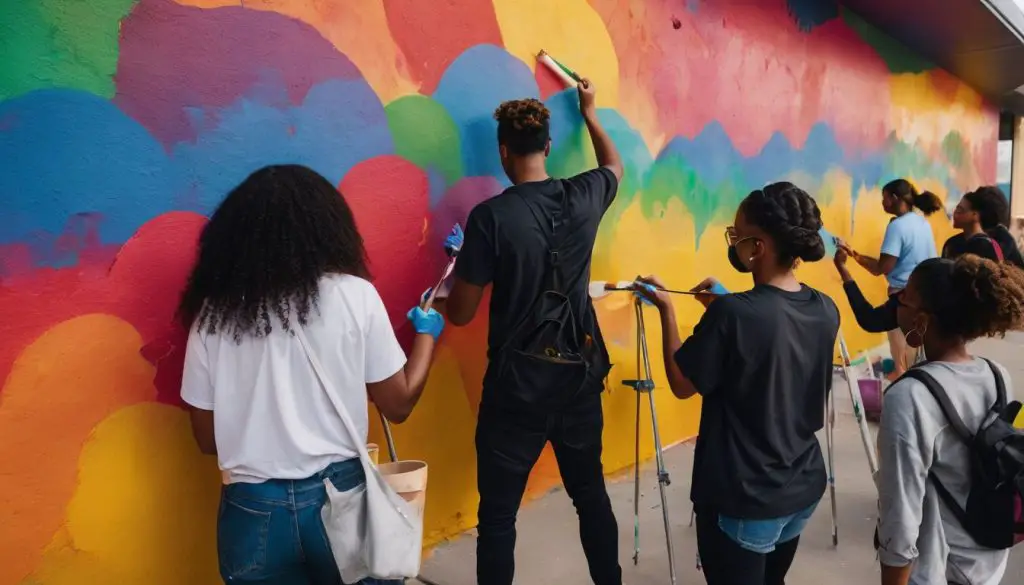
Teaching visual arts can be a complex task that requires unique methods and approaches. Surprisingly, nearly 90 percent of people believe that the arts should be taught in grades K-12.
This blog post is designed to shed light on effective strategies used in visual art education pedagogy and how they foster creativity, critical thinking, and self-expression among students.
If you’re an artist, student, or educator interested in unlocking creative potential through art instruction – keep reading!
Key Takeaways
Table of Contents
Challenges in Visual Art Education Pedagogy
Limited pre-service training, ambiguous pedagogy and theory, and beliefs overriding training are some of the challenges faced in visual art education pedagogy.
Limited pre-service training
Not having enough training before teaching art can be a problem. Art teachers might not feel sure of themselves. This happens when they don’t get good training before they start work.
Some facts show this is true. Low self-belief in the ability to teach art starts when they are young and doesn’t get better with basic training.
So, art teachers need more help at the start to do their jobs well. Better early training can make them feel more ready.
Ambiguous pedagogy and theory
The field of visual art education faces challenges due to ambiguous pedagogy and theory. This means that there is a lack of clear teaching strategies and approaches for art educators to follow.
It can be confusing for both the teachers and the students because they don’t have a consistent framework to guide their learning.
This ambiguity stems from limited pre-service training and beliefs that override proper training.
As a result, art educators may struggle to effectively teach critical and creative thinking skills, develop artistic techniques, and foster self-expression in students.
To address this issue, it’s important to provide comprehensive pre-service training, support ongoing professional development, foster collaboration between art educators, advocate for the importance of visual art education, and promote accessibility and inclusivity in art education programs.
Beliefs overriding training
Many art educators face the challenge of their beliefs overriding their training. Even though they may have received some pre-service training, their own personal beliefs about art and teaching often take precedence.
This can result in a lack of understanding and implementation of effective teaching strategies and pedagogical approaches.
It is important for art educators to be open-minded and willing to learn new techniques that are grounded in research and best practices.
By doing so, they can provide students with the best possible visual art education experience, promoting critical thinking, creativity, and artistic development.
Benefits of Effective Visual Art Education Pedagogy
Effective visual art education pedagogy encourages critical and creative thinking, develops artistic skills and techniques, and fosters self-expression and confidence.
Encourages critical and creative thinking
Effective visual art education pedagogy encourages critical and creative thinking in students.
By engaging in artistic activities, students are encouraged to think critically about the choices they make in their artwork and how those choices impact the overall composition.
They are also pushed to think creatively by coming up with new ideas, experimenting with different materials and techniques, and problem-solving when faced with challenges in their artistic process.
Research has shown that students who receive a quality visual arts education develop improved critical thinking skills, such as analyzing information, making connections between concepts, and evaluating different perspectives.
Additionally, through the exploration of various art forms and cultural perspectives, students can broaden their understanding of the world around them and develop a more open-minded approach to creativity.
Develops artistic skills and techniques
Visual art education pedagogy plays a crucial role in developing artistic skills and techniques among artists, art students, and art educators.
By providing opportunities for hands-on exploration and practice, it enables individuals to refine their abilities in various artistic design forms such as drawing, painting, sculpture, and design works.
Through dedicated instruction and guidance from qualified teachers, learners can expand their creative potential and enhance their understanding of different artistic techniques.
Moreover, by engaging in art projects and assignments that require experimentation with different materials and mediums, they gain valuable experience that contributes to their growth as artists.
Overall, effective visual art education pedagogy nurtures the development of artistic skills while promoting a love for creativity and self-expression.
Fosters self-expression and confidence
Art education fosters self-expression and confidence in students of all ages. Through visual art, individuals have the opportunity to express their thoughts, feelings, and ideas in a creative way.
This process of self-expression allows them to explore their own identity and inner world. By creating art, students gain a sense of accomplishment and validation for their unique perspectives and interpretations.
Moreover, engaging in art activities helps build confidence as individuals see themselves as capable creators who can bring their visions to life.
Art allows students to take risks, make choices, and trust their creative instincts – all of which contribute to developing a strong sense of self-confidence.
With each artwork they create, students become more comfortable expressing themselves authentically and embracing the value of their own voice.
Innovative Approaches in Visual Art Education Pedagogy
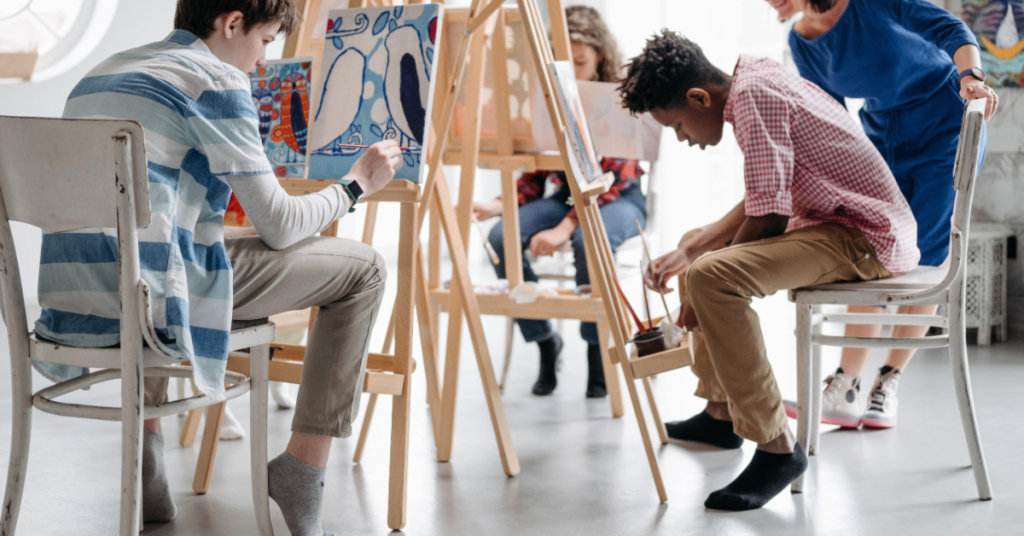
Incorporate technology and digital art, collaborate on projects, and introduce diverse art forms to enhance visual art education.
Read more to discover how these innovative approaches can transform the learning experience for students.
Incorporating technology and digital art
Incorporating technology and digital art in visual art education can bring many benefits to both students and educators.
Collaborative and project-based learning
Collaborative and project-based learning in visual art education promotes active engagement and creativity among students.
It allows them to work together on meaningful projects, fostering teamwork and communication skills.
By collaborating with their peers, students gain different perspectives and ideas, enhancing their problem-solving abilities.
Through project-based learning, students have the opportunity to apply what they have learned in a real-world context, deepening their understanding of artistic concepts and techniques.
This approach also encourages critical thinking as students make decisions throughout the creative process.
Additionally, collaborative and project-based learning in visual art education helps students develop a sense of ownership and pride in their work, boosting their confidence and self-expression.
Introducing diverse art forms and cultural perspectives
Introducing diverse art forms and cultural perspectives is important in visual art education because it:
- Expands students’ artistic horizons by exposing them to a variety of art forms such as painting, sculpture, photography, and digital art.
- Helps students appreciate different cultural traditions and artistic expressions from around the world.
- Encourages students to explore their own heritage and cultural identity through art.
- Promotes inclusivity and diversity in the classroom by showcasing artwork from artists of different ethnic backgrounds and cultures.
- Inspires creativity by introducing students to new techniques, materials, and styles used in various art forms.
- Enhances critical thinking skills as students analyze and interpret artwork from different cultures, considering the historical, social, and political contexts.
- Allows students to make connections between their own experiences and those of others through visual storytelling.
- Provides opportunities for collaborative projects that integrate cultural perspectives into the creative process.
Recommendations for Enhancing Visual Art Education Pedagogy
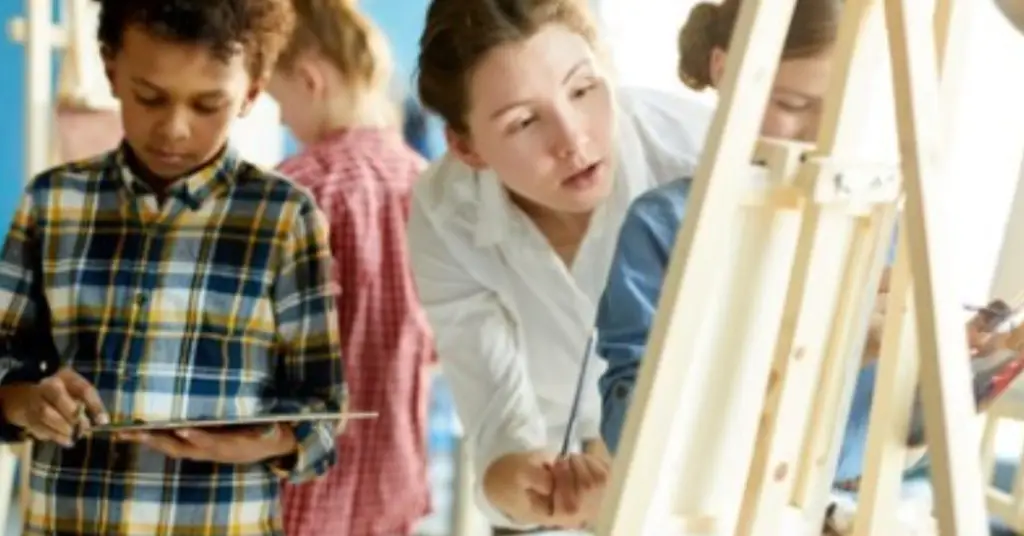
Enhance visual art education pedagogy by providing:
- comprehensive pre-service training,
- supporting ongoing professional development,
- fostering collaboration between art educators,
- advocating for the importance of visual art education, and
- promoting accessibility and inclusivity in art education.
– Provide comprehensive pre-service training
Art educators play a crucial role in shaping the artistic development of students. To ensure they are equipped with the necessary skills and knowledge, it is important to provide comprehensive pre-service training.
This training should cover not only artistic techniques and pedagogical approaches but also include instruction on how to engage students effectively and encourage their creative potential.
Additionally, ongoing professional development opportunities can further enhance art educators‘ abilities to adapt to the changing needs of students and incorporate innovative teaching strategies.
– Support ongoing professional development
Ongoing professional development is crucial for art educators to stay updated and enhance their teaching skills.
By participating in workshops, conferences, and training programs, they can learn new techniques, gain knowledge about different art forms and cultural perspectives, and exchange ideas with other professionals.
Ongoing professional development also helps educators stay current with advancements in technology that can be integrated into the classroom.
It ensures that they have the necessary tools and strategies to engage students effectively and foster their creativity.
Additionally, ongoing professional development enables art educators to continuously improve their own artistic skills, which positively impacts their ability to guide students in their artistic development.
– Foster collaboration between art educators
Art educators can enhance visual art education pedagogy by fostering collaboration with one another. By working together, they can share ideas, resources, and experiences to improve their teaching practices.
Collaborating allows them to learn from each other’s strengths and expertise, leading to more inclusive and effective art education programs.
This collaboration can also promote interdisciplinary learning by connecting visual arts with other subjects like music or literature.
By collaborating, art educators can create a supportive community that encourages professional growth and innovation in the field of visual art education.
– Advocate for the importance of visual art education
Visual art education is incredibly important for students of all ages. It helps develop critical thinking skills, encourages creativity and self-expression, and fosters cultural awareness.
Studies have shown that students who participate in the arts have a lower dropout rate and improved problem-solving abilities.
As artists, art students, and art educators, it is crucial that we advocate for the continued inclusion of visual art education in schools.
By highlighting the benefits of art education and its positive impact on overall learning, we can ensure that future generations have access to this valuable form of expression and exploration.
– Promote accessibility and inclusivity in art education
To ensure that art education is accessible and inclusive for all, there are several steps that can be taken;
- Firstly, schools and art institutions should provide resources and facilities that accommodate individuals with disabilities, such as wheelchair ramps or audio descriptions for visually impaired students.
- Secondly, educators should create a safe and welcoming environment where students from diverse backgrounds feel valued and respected.
- This can be done by incorporating different perspectives in the curriculum and encouraging open discussions about cultural differences.
- Lastly, promoting accessibility also means making art education available to everyone regardless of their socioeconomic status or geographic location.
- This could involve offering scholarships or organizing community outreach programs to bring art education to underserved areas.
Concluding Thoughts on Visual Art Education Pedagogy
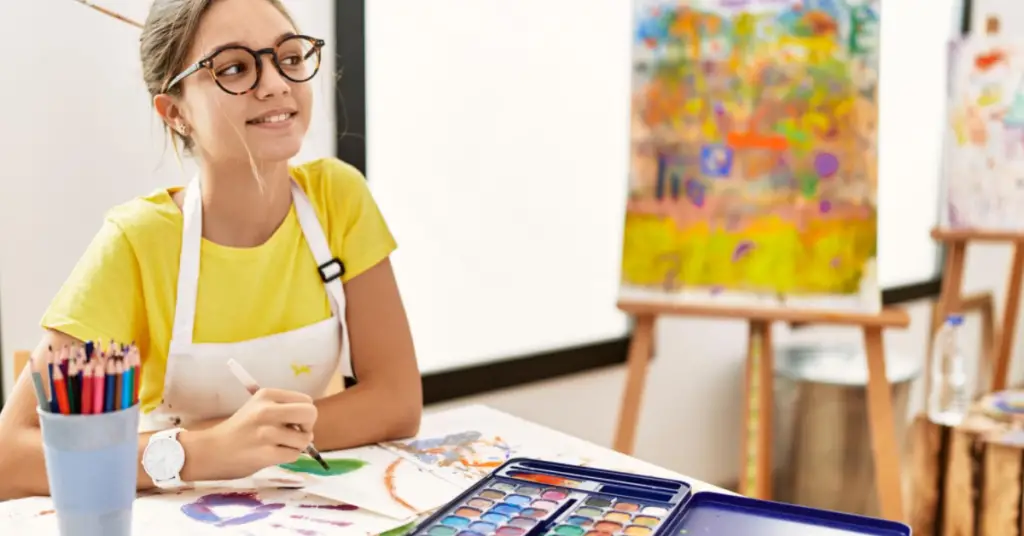
Effective visual art education pedagogy is crucial for fostering critical and creative thinking, developing artistic skills, and boosting self-expression and confidence.
By incorporating innovative approaches like technology integration and project-based learning, along with comprehensive pre-service training and ongoing professional development, we can enhance visual art education.
Advocating for the importance of art education, promoting collaboration among educators, and ensuring accessibility and inclusivity in art education are also key recommendations for improving visual art pedagogy.
Let’s continue to support the power of visual arts in education!
FAQs About Visual Art Education Pedagogy
What is visual art education pedagogy?
Visual art education pedagogy is a teaching approach used in early childhood contexts and secondary education to teach arts based on a set art curriculum.
How do choice-based pedagogy and discipline-based arts education fit into visual arts pedagogy?
Choice-based pedagogy gives students the power to choose what they create in art, while discipline-based arts education focuses on learning about different aspects of art, like creating, viewing, and understanding culture.
Are all teachers using contemporary visual art studies methods degree-qualified or vocationally trained?
Yes! The use of such teaching approaches requires that the teacher either has a degree in this field or has received vocational training specific to it.
Is cultural education part of visual arts pedagogical practices?
Indeed! Cultural education helps students better understand various styles and types of artworks from different cultures around the world.
Can creative pedagogy assist with integrating other subjects into an art curriculum through Art integration in Education?
Absolutely! Creative Pedagogical approaches can be powerful tools that blend core subjects like math or history with Visual Arts for improved learning experiences.
General Facts:
- Students with high arts participation and low socioeconomic status have a 4 percent dropout rate.
- Nearly 90 percent of people believe that arts should be taught in grades K-12.
- Educators’ low visual arts self-efficacy beliefs develop during childhood and are not improved by pre-service training.
- Art education in schools can lead to improvements in overall motivation, thinking, and problem-solving skills.
- Visual arts are important in education as they help foster creativity and self-expression.
- Art education includes performing arts like dance, music, and theater, as well as visual arts like drawing, painting, sculpture, and design works.
- Visual art learning is reliant on a complex system of perceptual, higher cognitive, and motor functions.
- Art education plays a role in enhancing learning across various subjects and disciplines.
- Visual arts education can help students develop critical thinking and analytical skills.
- Incorporating visual arts into the classroom can promote cultural awareness and appreciation.
Source URLs:
- https://www.americansforthearts.org/by-topic/10-a…
- https://theartofeducation.edu/2018/03/6-facts-that…
- https://journals.sagepub.com/doi/abs
- https://arteducationmasters.arts.ufl.edu/articles/im…
- https://www.prometheanworld.com/blogs/what-is…
- https://knilt.arcc.albany.edu/What_is_art_education_…
- https://www.ncbi.nlm.nih.gov/articles/PMC3274761
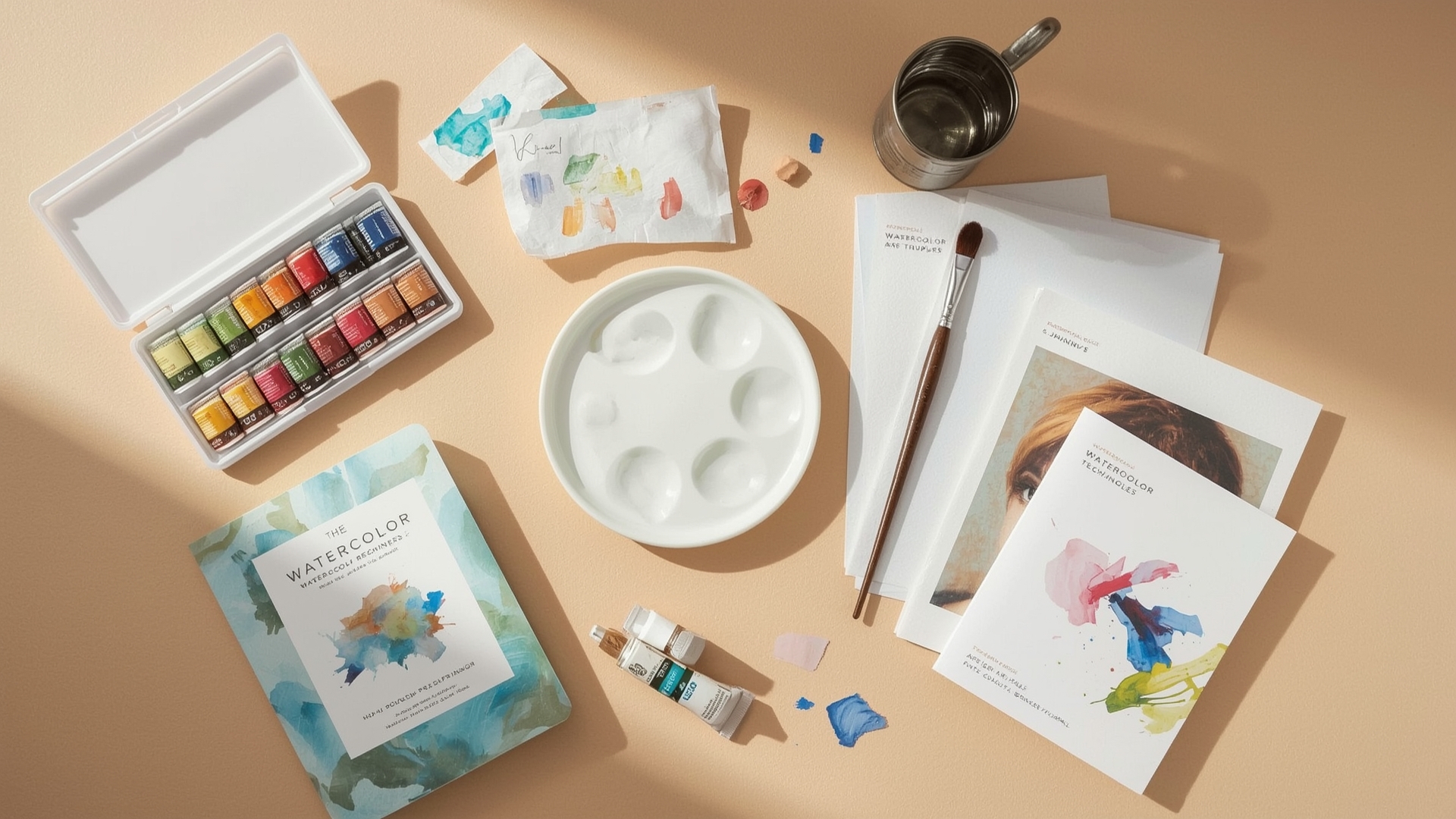
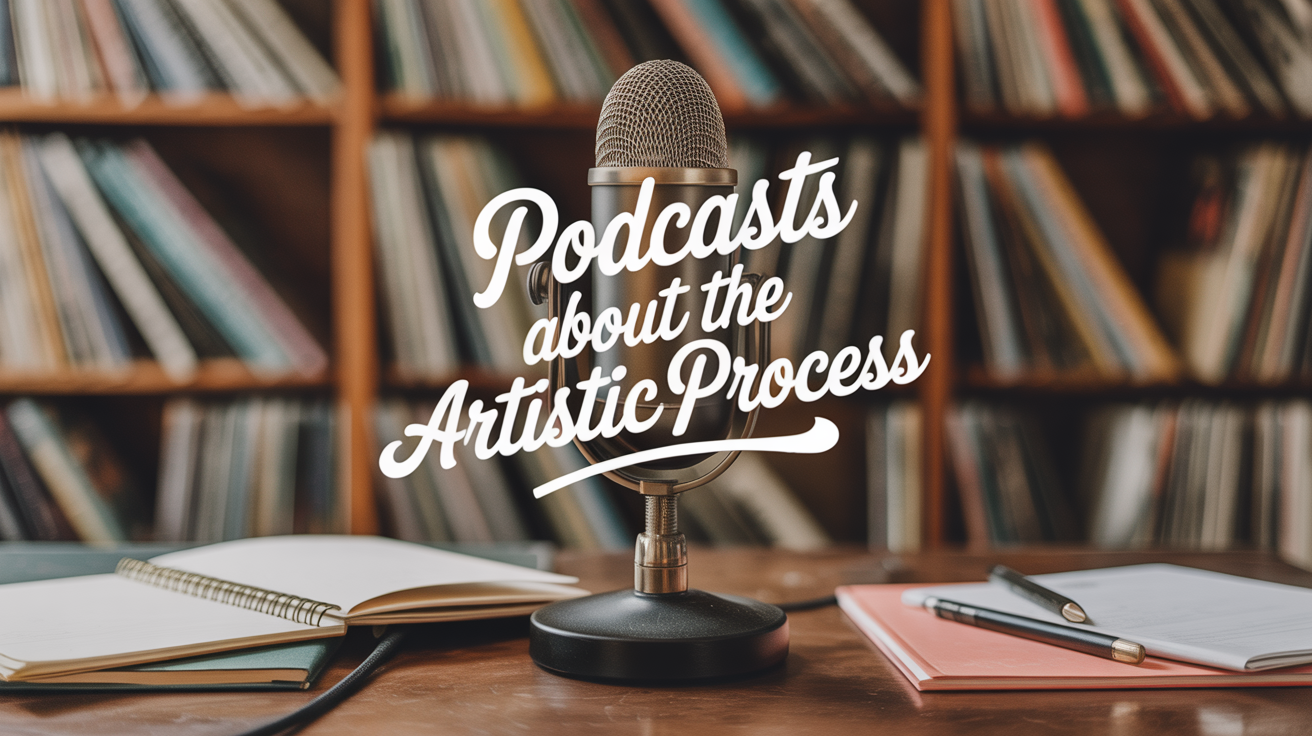
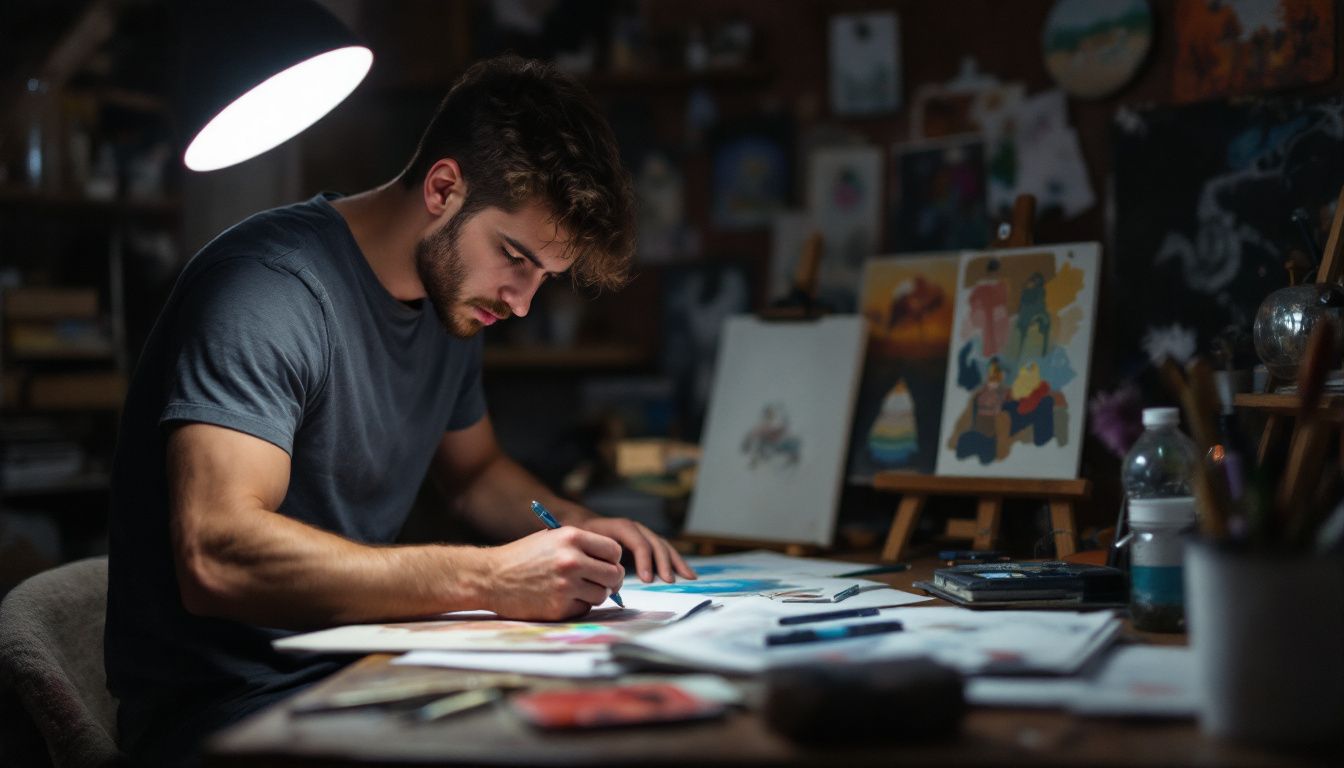
Leave a Reply